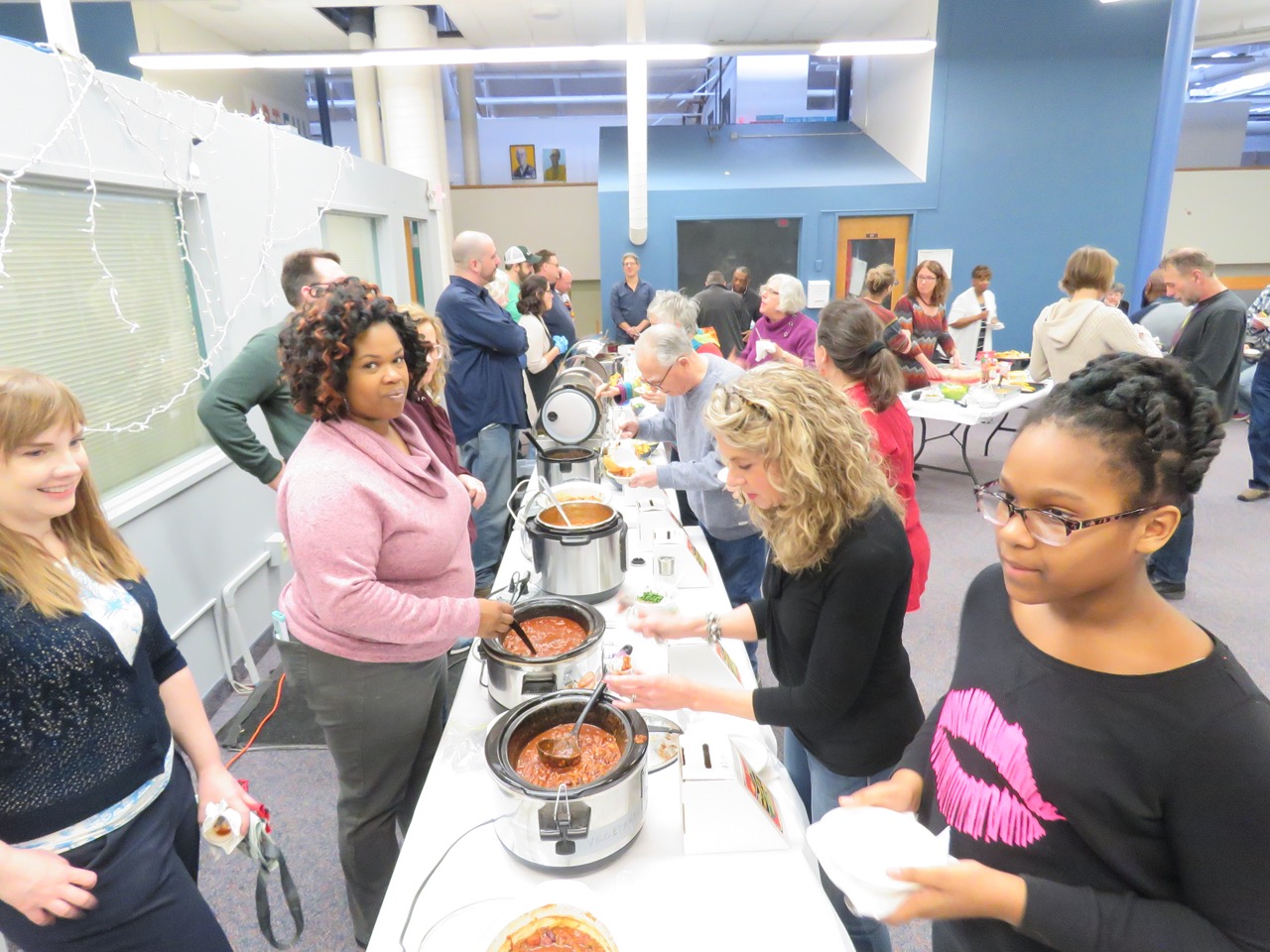How Art Programs Benefit Communities and Businesses.
Arts improve academic performance.
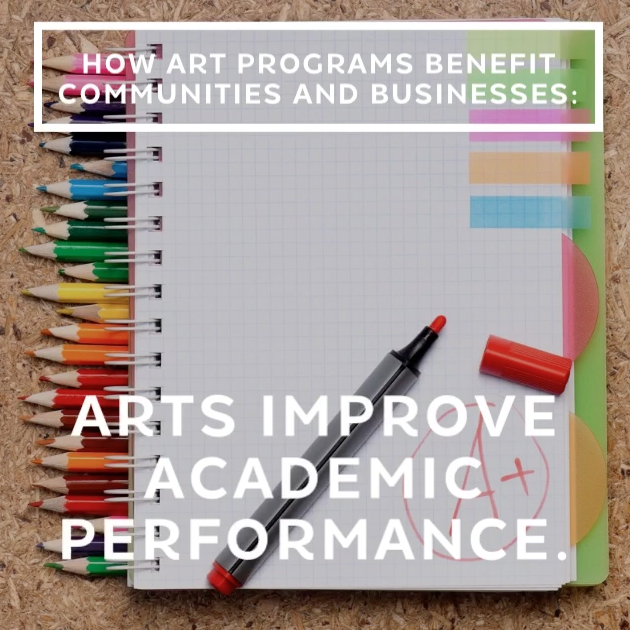
Students with an education rich in the arts have higher GPAs and standardized test scores, and lower drop-out rates—benefits reaped by students regardless of socio-economic status. Students with 4 years of arts or music in high school average 100 points higher on the verbal and math portions of their SATs than students with just one-half year of arts or music.
From: bit.ly/WhyArtsA
Arts strengthen the economy.
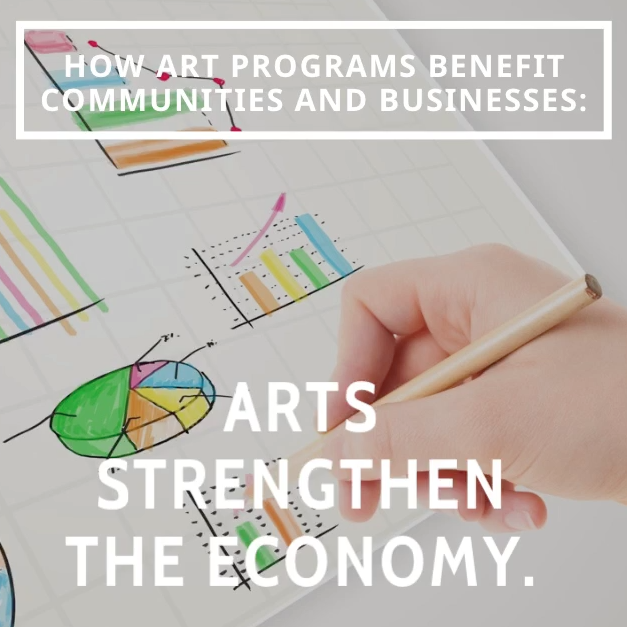
Nationally, the sector generated $151.7 billion of economic activity in 2022—$73.3 billion in spending by arts and culture organizations and an additional $78.4 billion in event-related expenditures by their audiences.
- It supported 2.6 million jobs
- Provided $101 billion in personal income to residents
- Generated $29.1 billion in tax revenue to local, state, and federal governments
From: bit.ly/WhyArtsA2
In Cuyahoga County, the sector generated $533.2 million in economic activity during 2022.
- $389.8 million in spending by arts and culture organizations
- $143.3 million in event-related expenditures by their audiences
- Supported 8,637 jobs
- Provided $432.1 million in personal income to residents
- Generated $104.2 million in tax revenue to local, state, and federal governments.
From: bit.ly/WhyArtsA2
Arts are good for local merchants.

Arts and culture drives commerce to local businesses. When people attend a cultural event, they often make an outing of it—dining at a restaurant, paying for parking or public transportation, enjoying dessert after the show, and returning home to pay for child or pet care. Overall, in Cuyahoga County, attendees spend $37.33 per person per event, beyond the cost of admission. These dollars represent vital income for local merchants and a value- add with which few industries can compete.
- Nonlocal visitors spend an average of $46.67
- 74.7% of nonlocal attendees reported that the primary purpose of their visit was specifically to attend the performance, event, exhibit, venue, or facility where they were surveyed.
These dollars represent vital income for local merchants and a value-add with which few industries can compete.
From: bit.ly/WhyArtsA2
Arts have social impact.
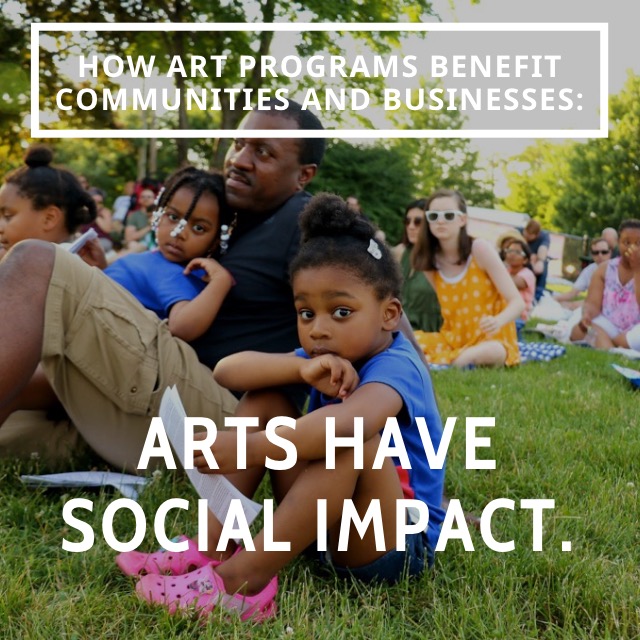
University of Pennsylvania researchers have demonstrated that a high concentration of the arts in a city leads to higher civic engagement, more social cohesion, higher child welfare, and lower crime and poverty rates.
From: bit.ly/WhyArtsA
Just look at Gordon Square as an example.
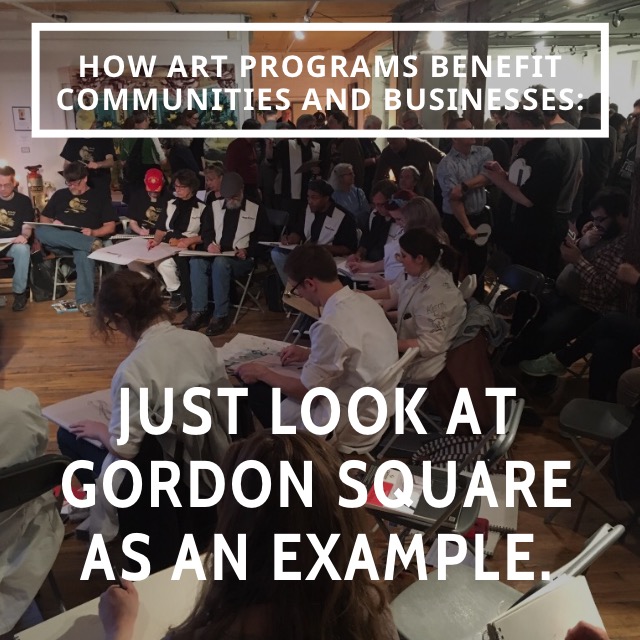
From 2006-2014 the Westside neighborhood alone acquired over 75 new businesses, 520 new jobs, and is expected to gain nearly $500 million in economic development funds.
From: bit.ly/WhyArtsB
Cleveland Heights Has the Greatest Concentration of Artists.
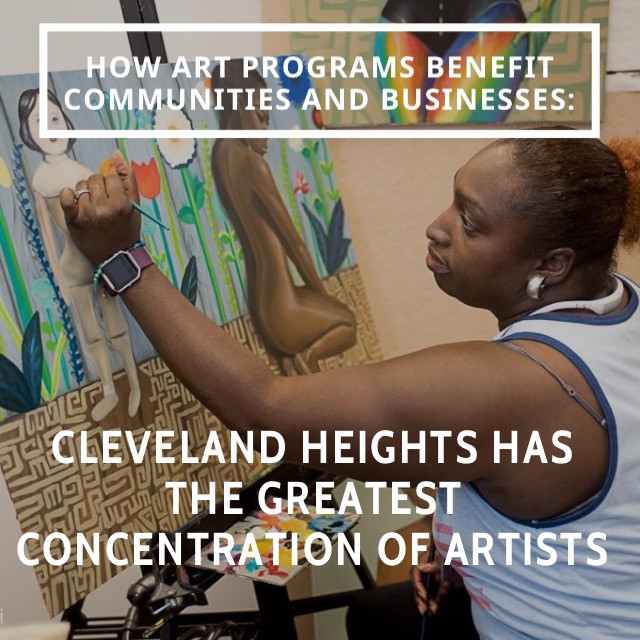
The greatest concentration of all artists is in the near eastern suburbs, centering on the neighborhoods in Cleveland Heights. Most disciplines exhibit high density in the University Circle/Little Italy neighborhood and in the neighborhoods in the “Heights” suburbs (Cleveland Heights, Shaker Heights, and University Heights).
From: bit.ly/WhyArtsE2
Employees want to live and work in a vibrant community.
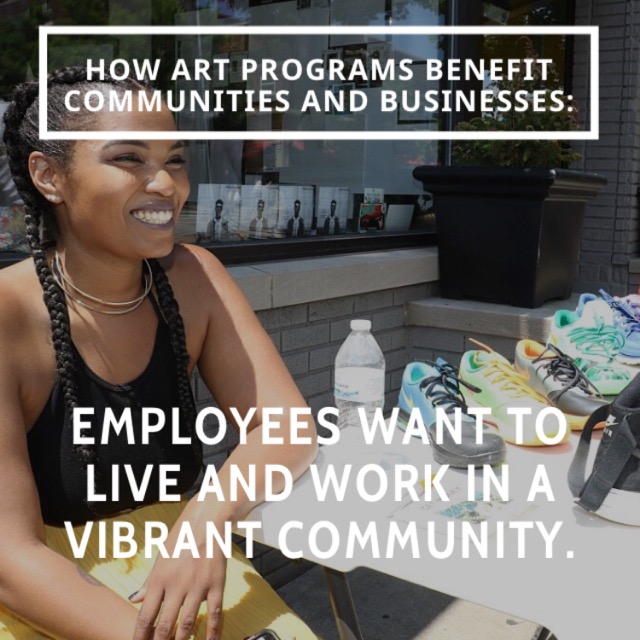
The arts are essential to the development of a vibrant and diverse community in which the best employees want to live, work, shop, create, and contribute.
- 71% of the population agree “the arts have a social impact, improving the quality and livability of my community.”
- 79% of companies believe arts help to improve quality of life in the community.
- 66% of business establishments consider the arts and entertainment as either somewhat or very important for making communities attractive places to work.
From: bit.ly/WhyArtsE
Nonprofit Arts Are a Multi-Faceted Economic Powerhouse.

Nonprofit arts and culture organizations are businesses. They employ people locally, purchase supplies and services from nearby businesses, and engage in the marketing and promotion of their cities and regions. Their very act of doing business—creating, presenting, exhibiting, engaging—has a positive economic impact and improves community well-being.
From: bit.ly/WhyArtsA2
In 2017, the combined $5 billion in direct arts funding by local, state, and federal governments yielded $27.5 billion in government revenue: $6.9 billion to local governments, $7.7 billion to state governments, and $12.9 billion in federal government revenue.
From: bit.ly/WhyArtsC2
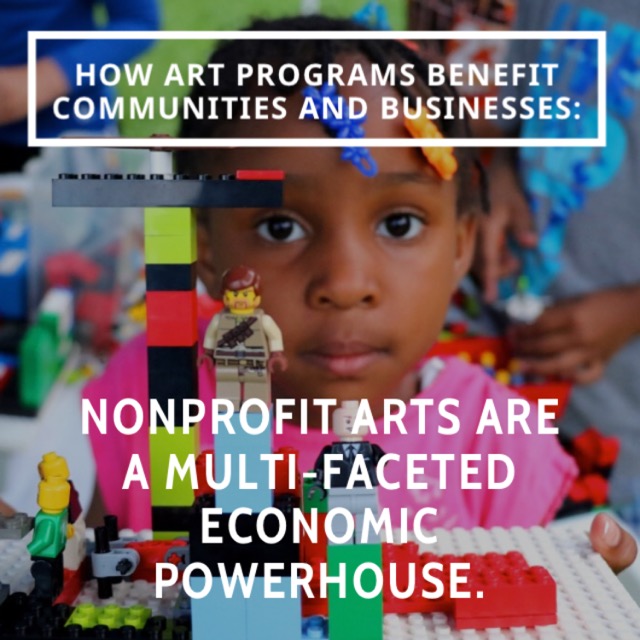
Arts & Economic Prosperity 6 delivers a clear and welcome message: when communities invest in arts and culture, they are not investing in community development at the expense of economic development. Rather, they are investing in an industry that stimulates the economy, supports local jobs, and contributes to building healthy, vibrant, and more livable communities. When we support the arts, we are investing in both Cuyahoga County’s economic and community well-being.
From: bit.ly/WhyArtsA2
Surveys completed by both arts organizations and individual attendees demonstrate a deep appreciation for how the arts and culture impacts the development and well-being of communities and their residents. Nationally, high levels of appreciation are demonstrated across all socioeconomic groupings. In Cuyahoga County:
- 88.4% of attendees said that the activity or venue they were attending was a source of neighborhood pride for the community
- 86.2% of attendees said they would feel a sense of loss if that activity or venue was no longer available
- 85.9% of attendees said it important that future generations also be able to have that cultural experience
From: bit.ly/WhyArtsC
Arts improve healthcare.

Nearly one-half of the nation’s healthcare institutions provide arts programming for patients, families, and even staff. 78 percent deliver these programs because of their healing benefits to patients—shorter hospital stays, better pain management, and less medication.
From: bit.ly/WhyArtsA
Arts mean business.
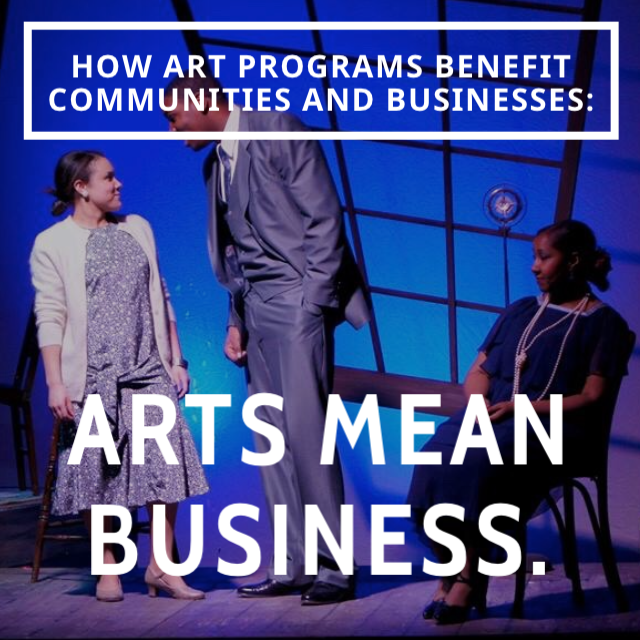
Nationally, GDP for the arts and culture nonprofit and commercial sector now tops $1.102 trillion with over 5.2 million jobs!
- Arts and culture exports increased the trade surplus from $15.5 billion to $21 billion
- The arts and culture sector represents a full 4.31% of the nation’s GDP
From: bit.ly/WhyArtsB2
Arts are an export industry.

From 2021 through 2022, arts and cultural exports continued to increase; the trade surplus rose from $15.5 billion to $21.0 billion.
From: bit.ly/WhyArtsD2
Arts spark creativity and innovation.

The Conference Board reports that creativity is among the top 5 applied skills sought by business leaders—with 72 percent saying creativity is of high importance when hiring.
From: bit.ly/WhyArtsA
Creative Placemaking Fosters Economic Development.

Creative placemaking animates public and private spaces, rejuvenates structures and streetscapes, improves local business viability and public safety, and brings diverse people together to celebrate, inspire, and be inspired.
From: bit.ly/WhyArtsD
What is Coventry PEACE Campus?
When the school district sought to divest itself from the former Coventry Elementary School building in 2017, leaving its future uncertain, the leaders of all the tenant organizations and a broad base of community supporters came together in a grassroots movement to propose ways to preserve and grow the thriving culture and service ecosystem that had organically taken root there.From this effort, the Coventry PEACE Campus came into being. Coventry P.E.A.C.E., Inc. is the non-profit overseeing the maintenance, sustainability, renovation and development of the Coventry PEACE Building, which houses several local nonprofits. It is our goal to provide an accessible, sustainable, more efficient, and affordable home for these nonprofits, and to attract new organizations to the building.
